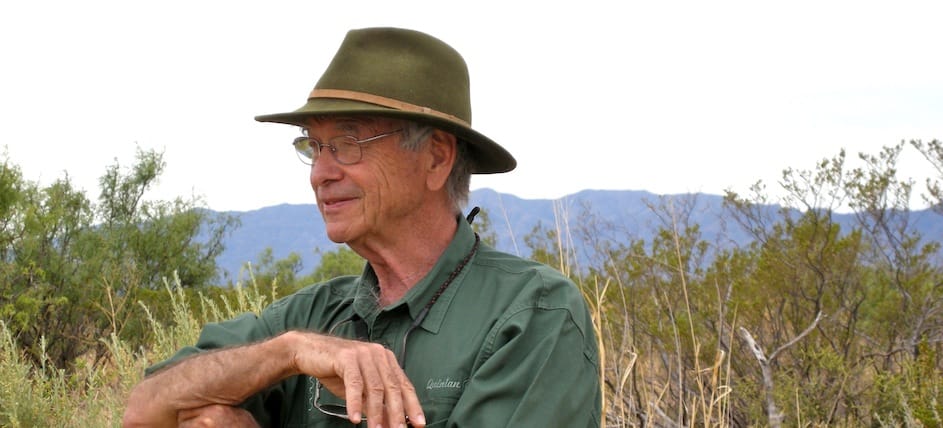Savory Institute: Holistic Management Research Portfolio

Allan Savory at Circle Ranch, June 2009
Almost every American wildlife agency, conservation organization, university, wildlife and range scientist is pledged to the North American Model of Wildlife Conservation. The Model lists its Core Principal #6 as:
“6. Science Is the Proper Tool to Discharge Wildlife Policy
In his classic work titled Game Management, Leopold (1933:17-18) stated the following:
“The Roosevelt Doctrine of conservation determined the subsequent history of American game management in 3 basic respects.
1. It recognized all these ‘outdoor’ resources as one integral whole.
2. It recognized their ‘conservation through wise use’ as a public responsibility, and their private ownership as a public trust.
3. It recognized science as a tool for discharging that responsibility.”
Science as a base for informed decision making
in wildlife management has become standard in Canada and the U.S. Nevertheless, funding has been largely inadequate to meet the research needs of management agencies, and a trend toward greater political influence in decision making threatens this principle (Wildlife Management Institute 1987, 1997). As Leopold wrote (Meine 1988:359-360):
“One of the anomalies of modern ecology is the creation of two groups, each of which seems barely aware of the existence of the other. The one studies the human community, almost as if it were a separate entity, and calls its findings sociology, economics and history. The other studies the plant and animal community and comfortably relegates the hodge-podge of politics to the liberal arts. The inevitable fusion of these two lines of thought will, perhaps, constitute the outstanding advance of this century.”
The development of human dimensions of wildlife as a discipline has moved us closer to realizing Leopold’s ideal. The integration of biological and social sciences is necessary to meet the conservation challenges of the 21st century.”
The North American Model of Wildlife Conservation pp 20-21: Go Here.
Holistic Management is a planning process that, among other things, incorporates a social component that recognizes that working relationships must be maintained within and between families, neighbors and groups for habitat and wildlife to be restored. This “fusion” of social and range science, which Leopold said “…will, perhaps, constitute the outstanding advance of this century,” is dismissed as ‘a religion’ by some scientists who would probably also say they agree with Aldo and follow the Model.
Physiologically, planned grazing does precisely what the Model advocates: it rests its practices on science, as set forth by The Roosevelt Doctrine. Widely-misunderstood as a grazing system, Holistic Management is actually a planning process that applies four key physiological principles highlighting the interdependent relationship between large herds of grazing animals, their predators and the grasslands that support them, to achieve desired outcomes.
- Nature functions in wholes: You can’t control or change one thing in one area without having an impact on something else in another area.
- All environments are different: It is crucial to acknowledge nature’s complexity and that an action can produce completely different results in different environments.
- Properly managed livestock can improve land health: When domestic livestock is properly managed to mimic the behavior of wild herbivores interacting with grasslands, they can reverse desertification.
- Time is more important than numbers: Overgrazing of plants is directly related to the amount of time the plants are exposed to the grazing animals and the amount of time that lapses between consecutive grazing events.
Are these Principles valid as matters of science? Are they proven by results? Or are they ‘snake oil,’ as some scientists maintain? Here is a wealth of data that addresses these questions. Much of this information was presented by individual practitioners who are filling the vacuum created by the inadequate funding for and the political interference in the scientific process, as referenced above. These practitioners also have a wealth of hands-on experience which even the most diligent, objective, and well-funded researcher can seldom acquire.
